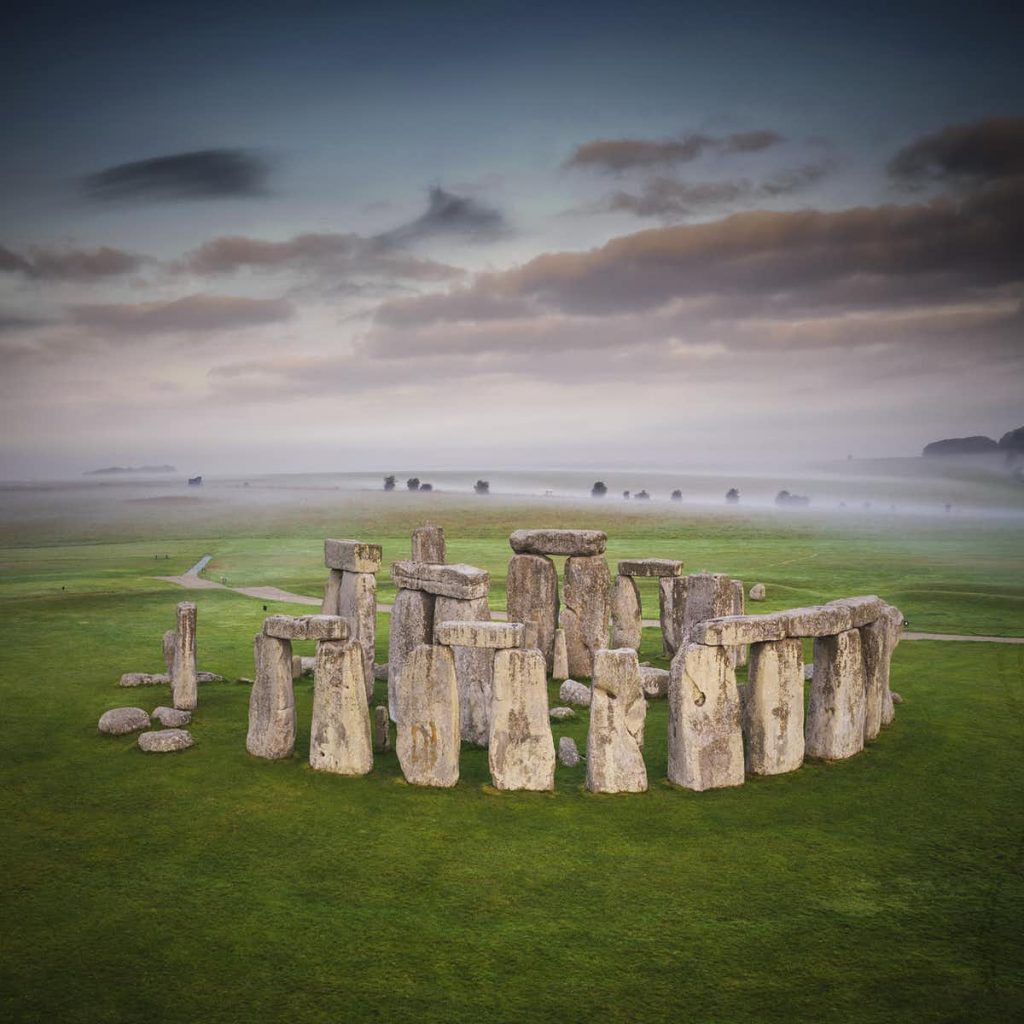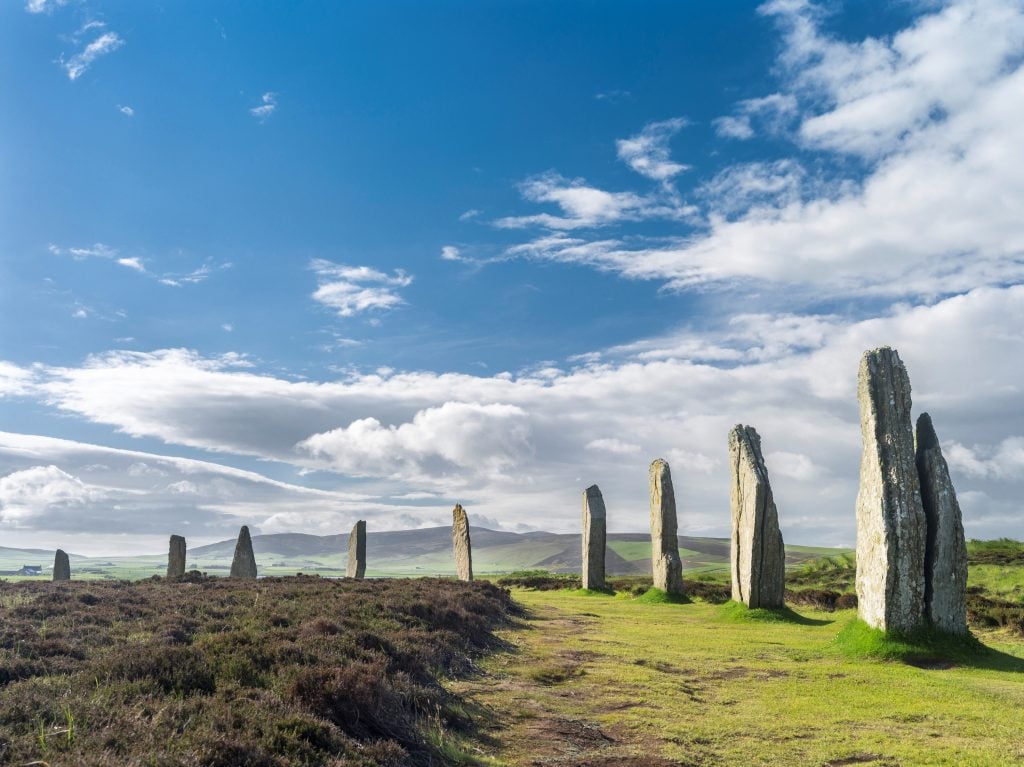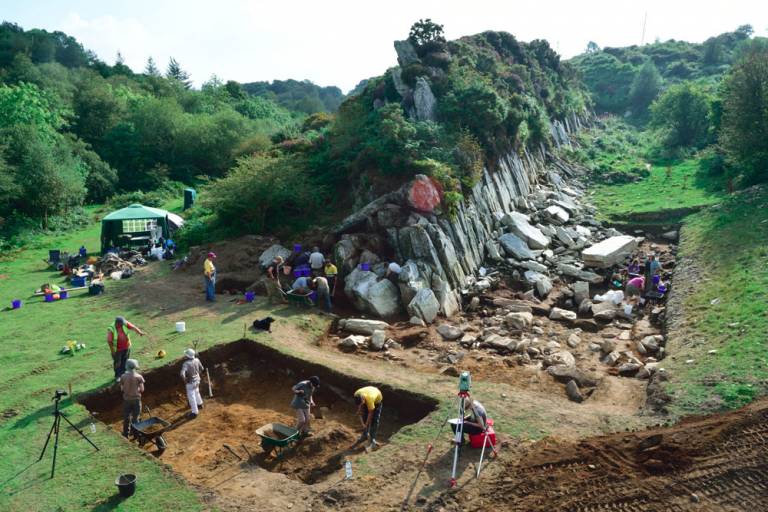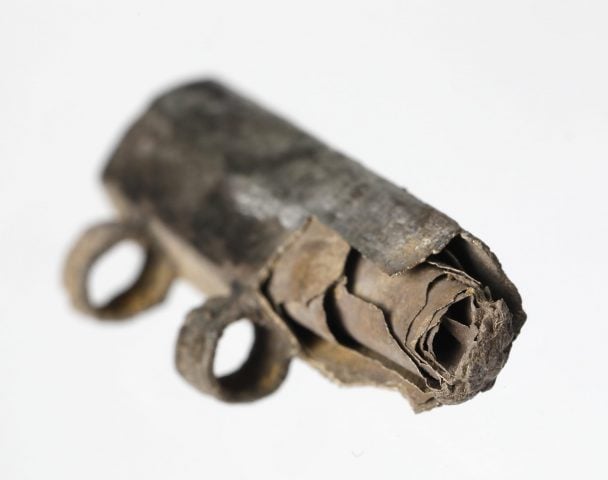Archaeology & History
The Hunt: Will We Ever Know Who Built Stonehenge?
Aliens, Druids, and Romans have all been suggested.

Stonehenge enters the historical record in 1129 via archdeacon Henry of Huntington. Awed by its scale, confounded by its oddity, Huntington writes, “no one can find out by what mechanism such masses of stone were elevated, nor for what reason they have been erected in that place.”
Nine hundred years later, these fundamental questions of how and why people raised 25-ton stones on an exposed plain in southern England remain.
Advancements in archaeological science over the past 50 years have proven more conclusive in answering when Stonehenge was built and by whom. Spoiler alert: it wasn’t aliens, Merlin, or the Druids (sorry Spinal Tap).
Salisbury Plain, a mosaic of grasslands and woods flanked by rivers, was long a Mesolithic hub for hunting and fishing. Soil analysis together with dug pits and post holes at Stonehenge push activity as far back as 8000 B.C.E. Things changed in the middle of the fourth millennium when migrants from the eastern Mediterranean arrived. They brought husbandry and agriculture and ushered in Britain’s Neolithic period.
Within 500 years, their descendants began lifting, shifting, and arranging very heavy stones—a practice that would evolve in six stages until roughly 1520 B.C.E.

The Ring of Brodgar in the Orkney Islands was build at roughly the same time as Stonehenge. Photo: Martin Zwick/ Getty Images.
It started with a perfect circle. Five thousand years ago, the shape acquired newfound significance (as opposed to circle-ish), evidenced by similar rings that appear contemporaneously across the British Isles. At Stonehenge, the first circle was formed by 56 small stones with an encircling ditch and bank.
Around 2500 B.C.E., the large iconic stones were erected in a horseshoe formation. Fifty or so years later, a ceremonial path was dug to the River Avon. The remaining three stages involved reconfiguring the smaller stones as an inner oval and building two rings of pits outside the circumference of the larger stones.
But how were the stones transported to Salisbury Plain? It depends on the type, of which there are two: bluestones (named for their color when wet or newly broken) and sarsen stones (a derivative of the word saracen, possibly indicating foreignness, their alien appearance in the landscape).
Stonehenge’s first circle was formed of the smaller bluestones. These have been geologically matched to two quarries 150 miles away in the Preseli Hills of southwest Wales. One theory, that glaciers moved the stones 500,000 years ago, has largely been dismissed. Instead, the stones were likely chiselled from the rock face, lowered onto sledges, and dragged cross-country.

Excavations of the bluestone site in Preseli Hills. Photo: Adam Stanford Aerial-Cam Ltd.
Previously, archaeologists favoured a sea and river route using rafts, for the sake of physical and engineering efficiency. The longer, more arduous land route is now more popular (allowing for crossing the Bristol channel). Transporting the stones would have been a highly social and symbolic event. Prestige would have been gained through involvement and the land route involves contact with a greater number of people.
The giant sarsen stones are local and have been sourced to West Woods, an area 15 miles north of Stonehenge—though two megaliths possibly originated very close the site itself. The sandstone blocks were likely dragged using sleds (possibly greased with pig fat) and once onsite were carved, dressed, and joined together.

Map showing the various proposed routes of the bluestones to Stonehenge. Photo: Geology Today.
As a monument that evolved over the course of centuries, there can be no single reason as to why Stonehenge was built. The landscape, however, offers clues. The nearby presence of giant free-standing stones might have inspired imitation—man mimicking and striving towards nature. Recent geological studies suggest the site’s alignment with the rising mid-summer sun was set in the landscape by freezing and thawing during the ice age. Ground lines connected with the sun and offered people the sense that the site was of primordial importance.
More clues arrive in the wealth of Neolithic sites found nearby. Giant trash heaps of animal bones traced to different regions of the British Isles offer the area as a meeting place of different peoples. Might Stonehenge be a symbol of unity? Populations were generally sparse and erecting the structure certainly required more hands than were present year-round. An offshoot of this thinking is that Stonehenge was a pilgrimage site for healing, a Neolithic Lourdes.
Whatever life enhancing properties the site may have (hello, new age druids), Stonehenge was undoubtedly closely associated with death. It’s Britain’s largest Neolithic cremation burial cemetery site with carbon dating showing bodies arrived from hundreds of miles away. Initially, bones were buried alongside the circle of bluestones and later in a series of surrounding mounds. This offers Stonehenge as a site of communal ancestor worship.
Archaeologists spy a closure with the arrival of the Sarsen stones. The thinking goes something like this: the bluestones came to represent long dead ancestors and their placement inside a ring of giant stones means they are protected and memorialized for posterity.
And yet, to fixate on unpicking the mysteries of Stonehenge’s past is to somewhat lose sight of its power. It’s a monument to humankind’s eternal instinct to leave a trace, to build something bold and beautiful and futile.
The Hunt explores art and ancient relics that are—alas!—lost to time. From the Ark of the Covenant to Cleopatra’s tomb, these legendary treasures have long captured the imaginations of historians and archaeologists, even if they remain buried under layers of sand, stone, and history.





